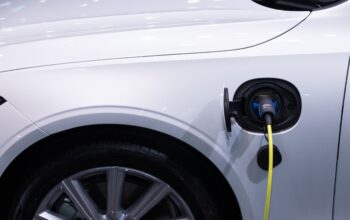The increasing adoption of electric vehicles (EVs) has the potential to revolutionize urban landscapes, especially when it comes to noise pollution. Noise pollution, often overlooked but pervasive in urban environments, has adverse effects on public health, quality of life, and the environment. In this article, we will explore the impact of electric vehicles on noise pollution and their role in creating quieter cities, addressing the benefits, challenges, and opportunities associated with this transformative shift.
The Problem of Noise Pollution:
Noise pollution, a byproduct of urbanization and transportation, has become a pressing concern in cities worldwide. Traffic noise, in particular, is a significant contributor to urban noise pollution, affecting residential areas, commercial districts, and public spaces alike. Chronic exposure to high levels of noise can lead to stress, sleep disturbances, and various health issues, including cardiovascular problems and mental health disorders. Additionally, noise pollution disrupts communication, interferes with learning in schools, and disturbs wildlife in urban ecosystems.
The Silent Revolution of Electric Vehicles:
Electric vehicles offer a promising solution to the problem of noise pollution. Unlike traditional internal combustion engine vehicles, EVs operate silently due to the absence of a conventional engine and exhaust system. Instead, electric vehicles are powered by electric motors, which produce little to no noise during operation. This silent revolution has the potential to transform urban soundscapes, creating quieter cities and improving the overall quality of urban living.
Benefits of Quieter Cities:
a. Improved Public Health: Reducing noise pollution in cities can have a positive impact on public health. Lower noise levels contribute to better sleep quality, reduced stress, and improved mental well-being among urban residents. By creating quieter environments, cities can foster a healthier and more resilient population.
b. Enhanced Urban Livability: Quieter cities offer a more pleasant and enjoyable living environment for residents. People can experience greater tranquility in parks, public spaces, and residential areas, fostering a stronger sense of community and connection with their surroundings.
c. Economic Advantages: Quieter cities can be more attractive for businesses, tourism, and real estate development. Reduced noise levels can increase the value of properties and contribute to urban revitalization efforts. Additionally, quieter commercial districts can improve the shopping and dining experience, attracting more customers and stimulating economic activity.
d. Eco-Friendly Image: Embracing electric vehicles and creating quieter cities aligns with sustainable and eco-friendly practices. By adopting EVs and promoting noise reduction initiatives, cities can enhance their environmental image and contribute to global efforts in mitigating climate change and improving air quality.
Challenges and Opportunities:
a. Pedestrian Safety: While quieter streets offer numerous benefits, there is also a potential risk associated with electric vehicles’ silent operation. Pedestrians, especially those with visual impairments, may rely on auditory cues to detect oncoming vehicles. To address this challenge, some EV manufacturers are exploring solutions such as adding external sound emitters, known as Acoustic Vehicle Alerting Systems (AVAS), to alert pedestrians of approaching electric vehicles.
b. Public Awareness: The shift to electric vehicles and quieter cities requires public awareness and education. Many people associate noise with vehicle safety, and the silent operation of electric vehicles may be a novel concept to some. Public outreach and education campaigns can help raise awareness about the benefits of quieter cities and the role of EVs in achieving this transformation.
c. Urban Planning and Noise Zoning: As cities evolve to accommodate electric vehicles and reduce noise pollution, urban planning and noise zoning will play a crucial role. Implementing noise regulations, such as quiet zones near residential areas or noise limits for commercial districts, can ensure that noise pollution remains under control while allowing for sustainable transportation solutions.
The Role of Policy and Regulation:
To fully capitalize on the potential of electric vehicles in reducing noise pollution, policymakers and city planners need to take a proactive approach. Key considerations include:
a. Incentives for Electric Vehicle Adoption: Governments can implement financial incentives and rebates to encourage EV adoption among residents and businesses. This can lead to a larger EV market share, consequently reducing the overall noise levels in cities.
b. Charging Infrastructure Planning: Planning for a robust and well-distributed charging infrastructure is essential to support the widespread adoption of electric vehicles. By strategically placing charging stations throughout the city, policymakers can encourage EV adoption and reduce the need for long-distance travel, thus contributing to noise reduction.
c. Smart Urban Design: Urban design plays a significant role in noise pollution. Policymakers should prioritize pedestrian-friendly design, mixed-use development, and green spaces that contribute to quieter and more livable urban environments.
Collaborative Efforts:
Creating quieter cities and promoting electric vehicles require collaborative efforts among stakeholders. Public-private partnerships between governments, automakers, charging infrastructure providers, and community organizations can drive innovation and lead to more sustainable transportation solutions. Additionally, city governments can work closely with electric vehicle manufacturers to design noise-aware vehicles and explore innovative technologies to further reduce urban noise pollution.
Electric vehicles have the potential to revolutionize urban transportation and create quieter cities. By eliminating noise pollution from internal combustion engine vehicles, EVs offer numerous benefits, including improved public health, enhanced urban livability, economic advantages, and a positive impact on the environment. Addressing challenges related to pedestrian safety, public awareness, and urban planning will be crucial in fully realizing the potential of electric vehicles in noise reduction.
To create quieter cities, policymakers, urban planners, and stakeholders must work together to implement supportive policies, build charging infrastructure, and prioritize smart urban design. By embracing electric vehicles and noise reduction initiatives, cities can become beacons of sustainability, fostering healthier, more livable, and eco-friendly environments for their residents. The silent revolution of electric vehicles offers a transformative opportunity to shape the cities of the future, where peace and tranquility coexist with cutting-edge transportation solutions.
